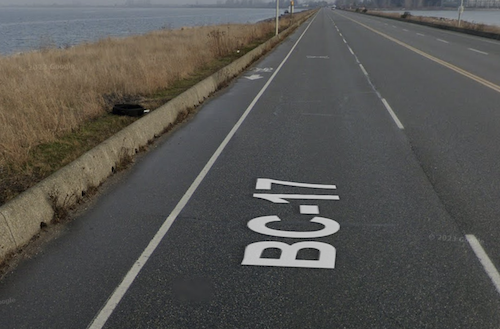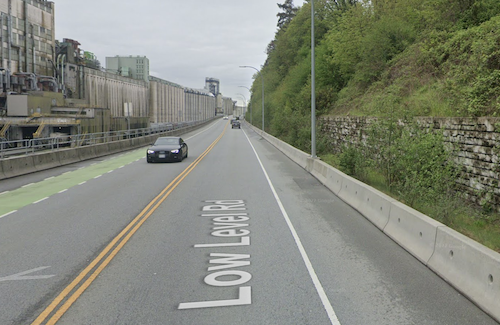What barrier placement shows you
If barriers are needed to protect car drivers from themselves, why aren't they needed to protect everyone else from car drivers?
You see them regularly on the side of roads, movable concrete barriers 1 on the side of the road. Safety barriers like these:
used to stop 'out of control' vehicles from leaving the road and hitting roadside hazards, including slopes
IRAP, Source
Alright, so 'out of control' or 'errant' vehicles are a problem. When you drive the Sea to Sky highway you might be grateful that there's some barriers to protect you from going over the edge, or into a cliff 👇

Car drivers make mistakes and the damage caused in those mistakes need mitigating by the addition of barriers.
But look at that image again and you'll notice between the car lanes and barriers is the bike lane. The bike lane is protected with a peice of paint, it doesn't get a barrier.
This is a pattern you see all over the place. On causeway to the ferry terminal at Tsawwassen 👇

On the low level road in North Vancouver 👇

The barriers in this case are protecting cars from going into bushes, slopes or onto beaches. This is a clear admission that things can go wrong and is done to protect car drivers from the consequences.
Yet the most vulnerable road users are not protected in any manner from the exact same circumstances.
The barrier is an admisssion that the car driver is not too be trusted to drive in a safe and careful manner down the road. While simultaneously ignoring the exact same situation for cyclists.
All that needs to happen is to move the movable barrier to the left and provide a seperation between the car lane and bike lane.
When you see a barrier placement like this, ask yourself what the politicians and traffic engineers who designed and approved this were thinking of and who they care about.
-
Not all barriers are the same, but the most common is Jersey barriers, first used in New Jersey in 1950s and have a particular geometry. ↩